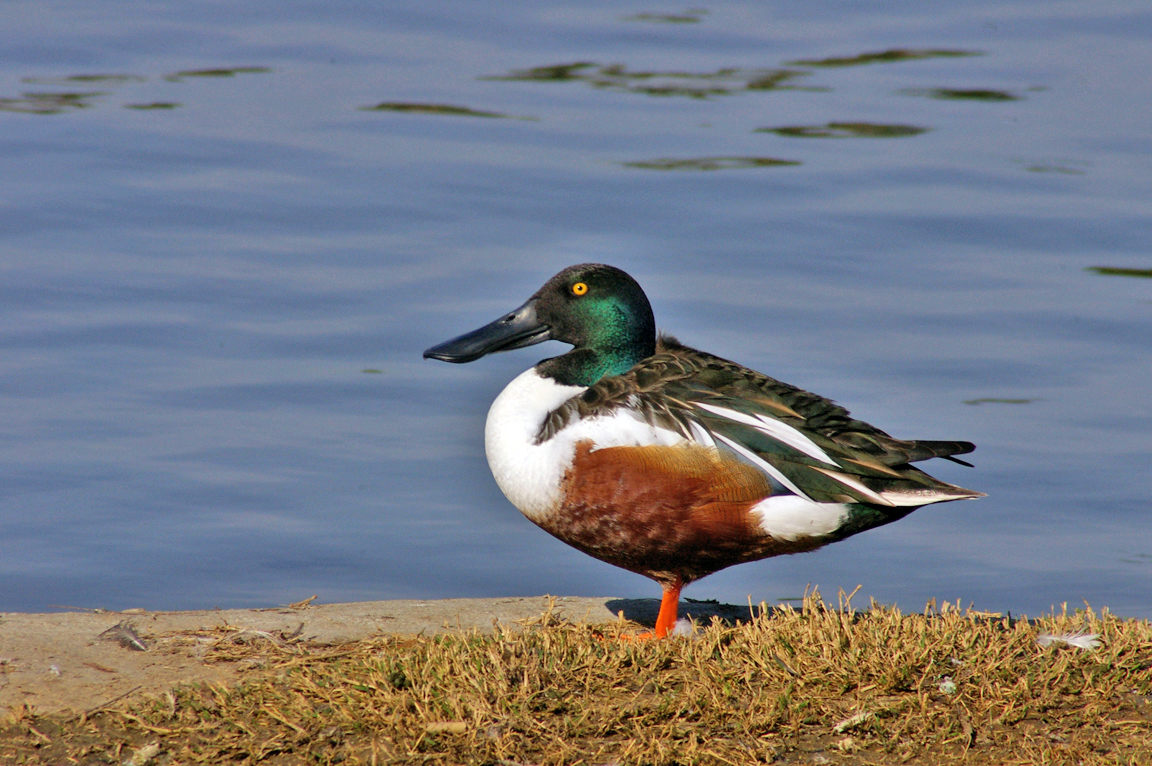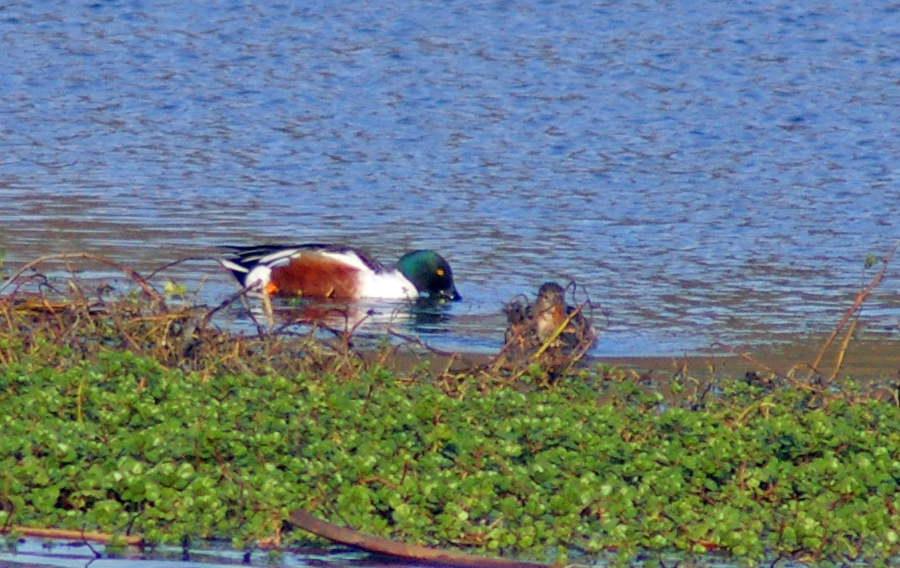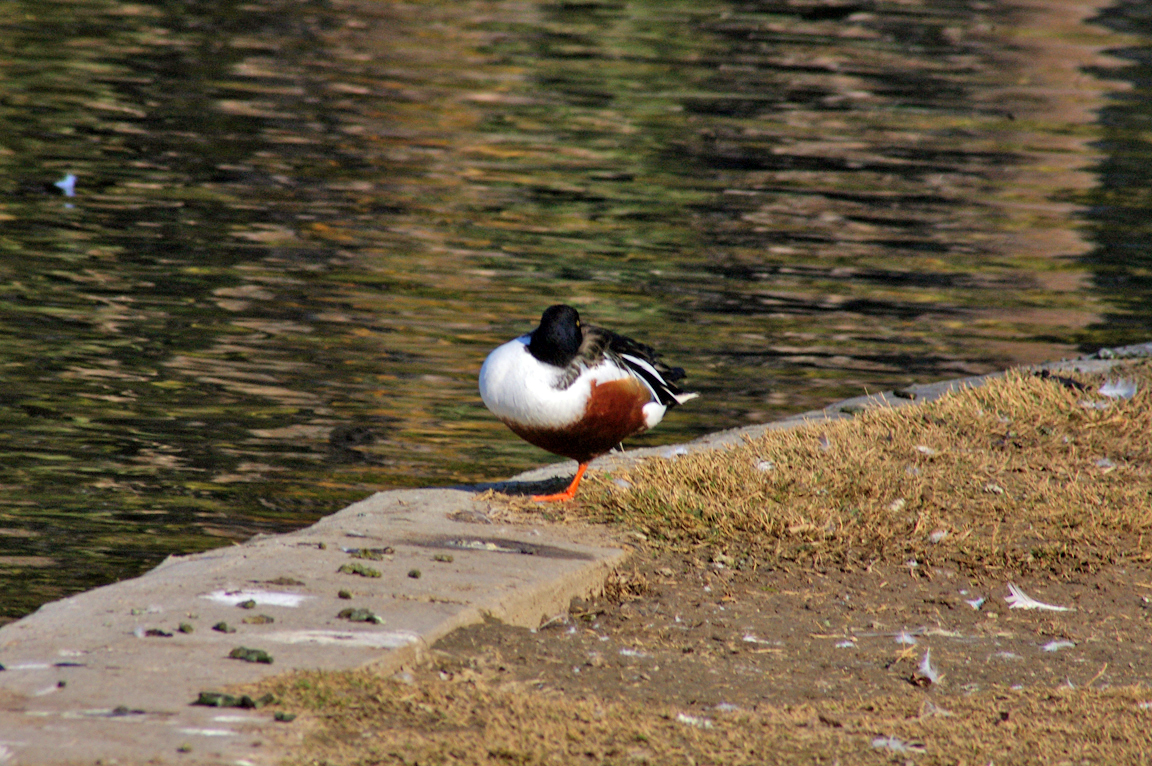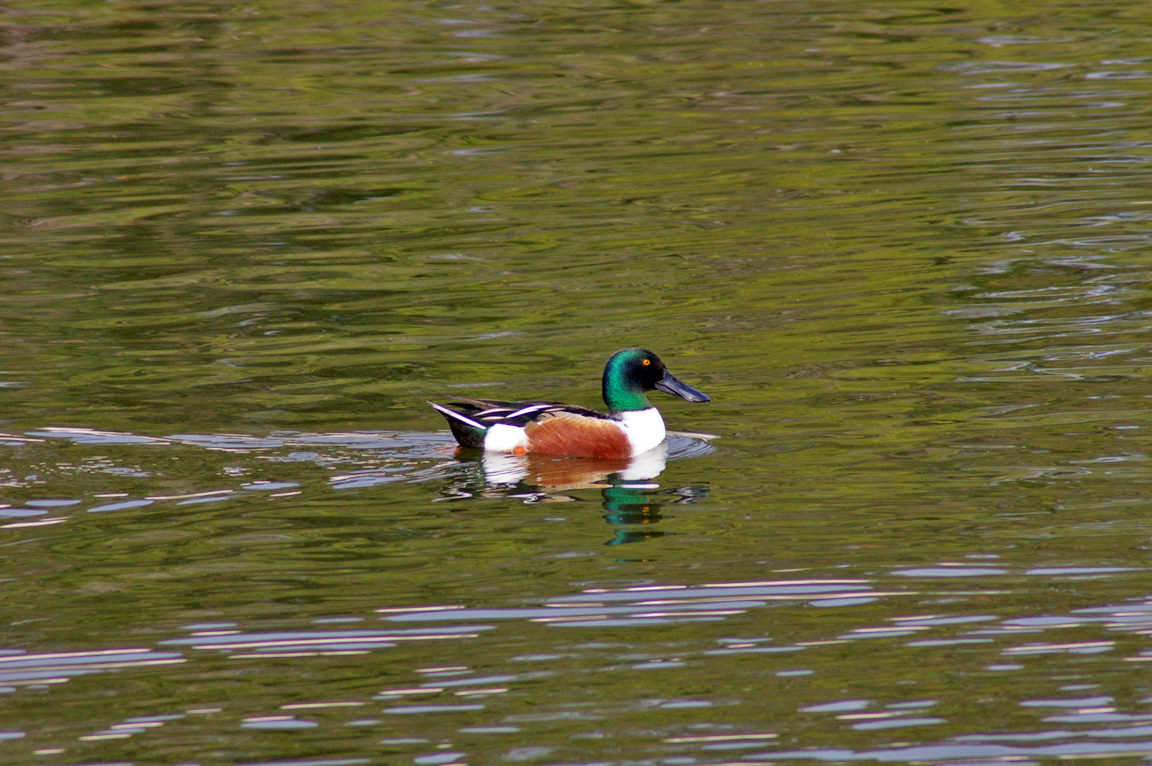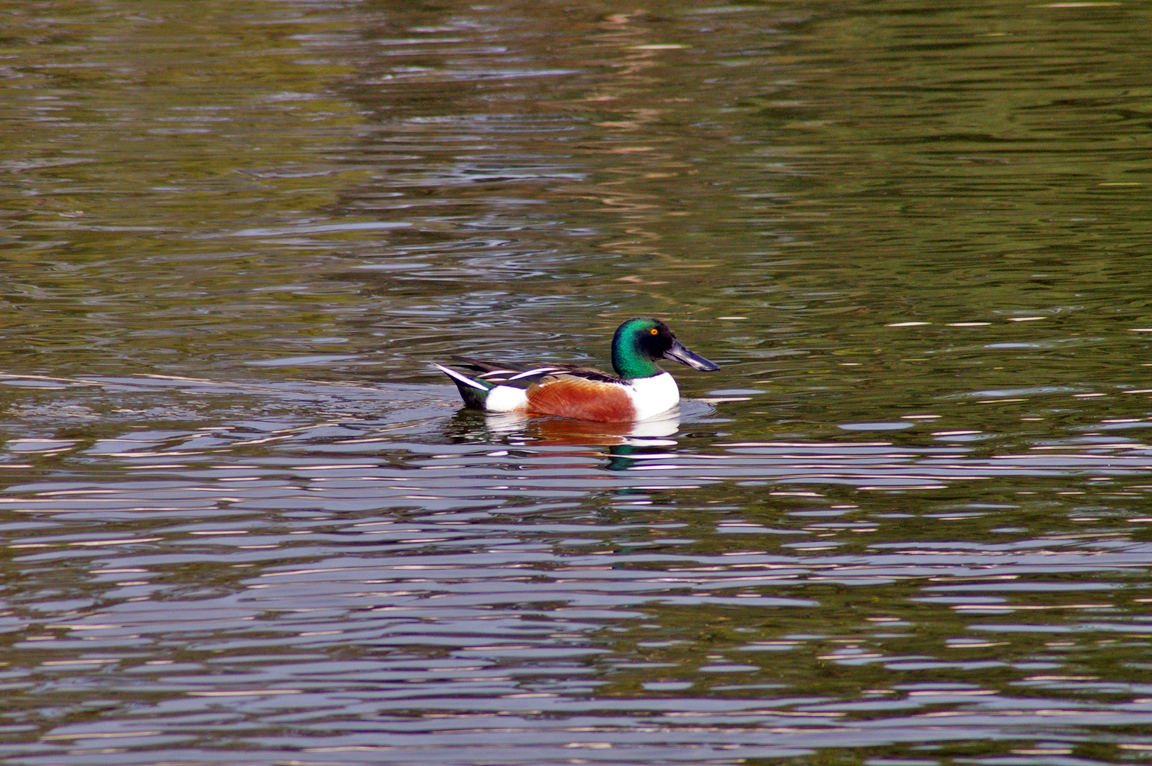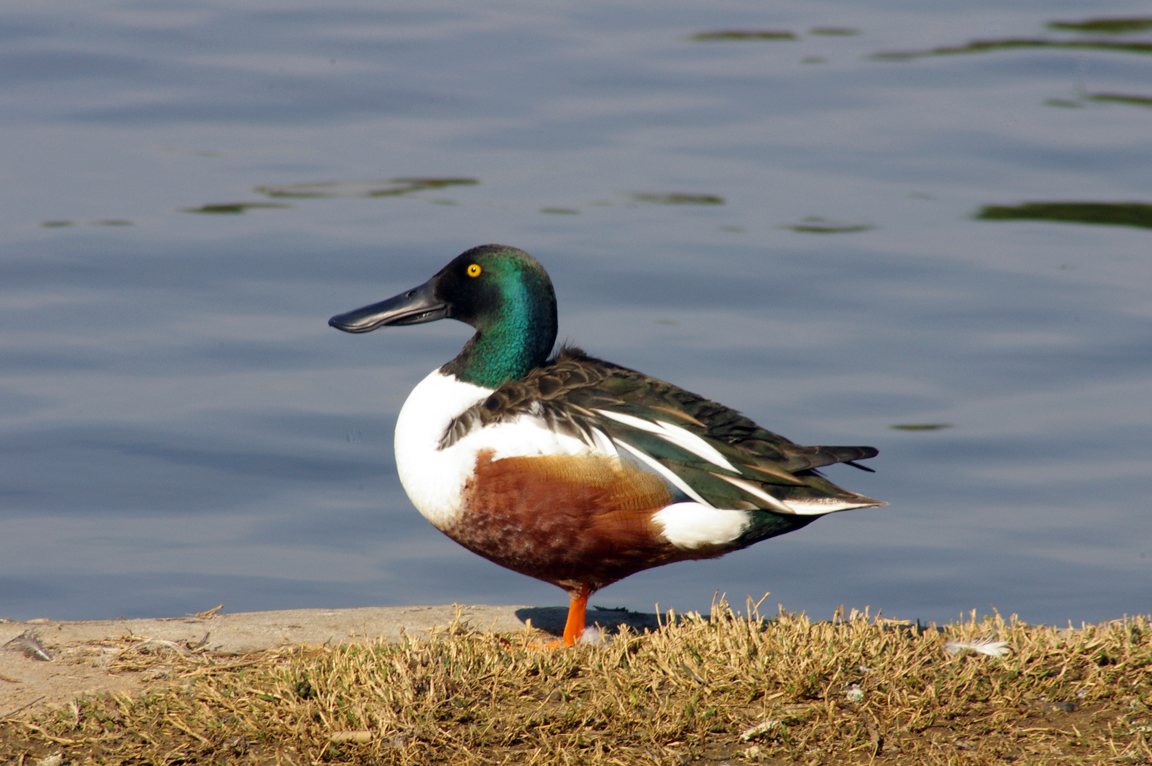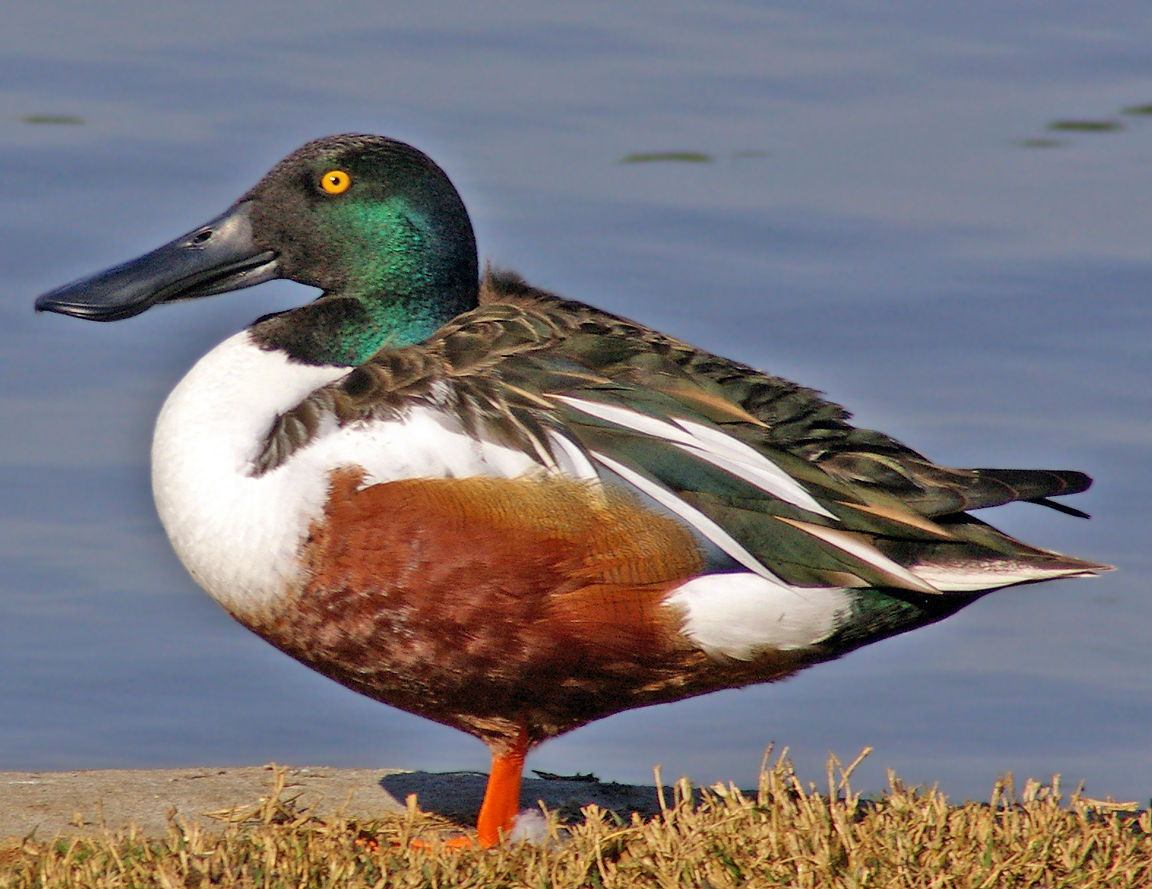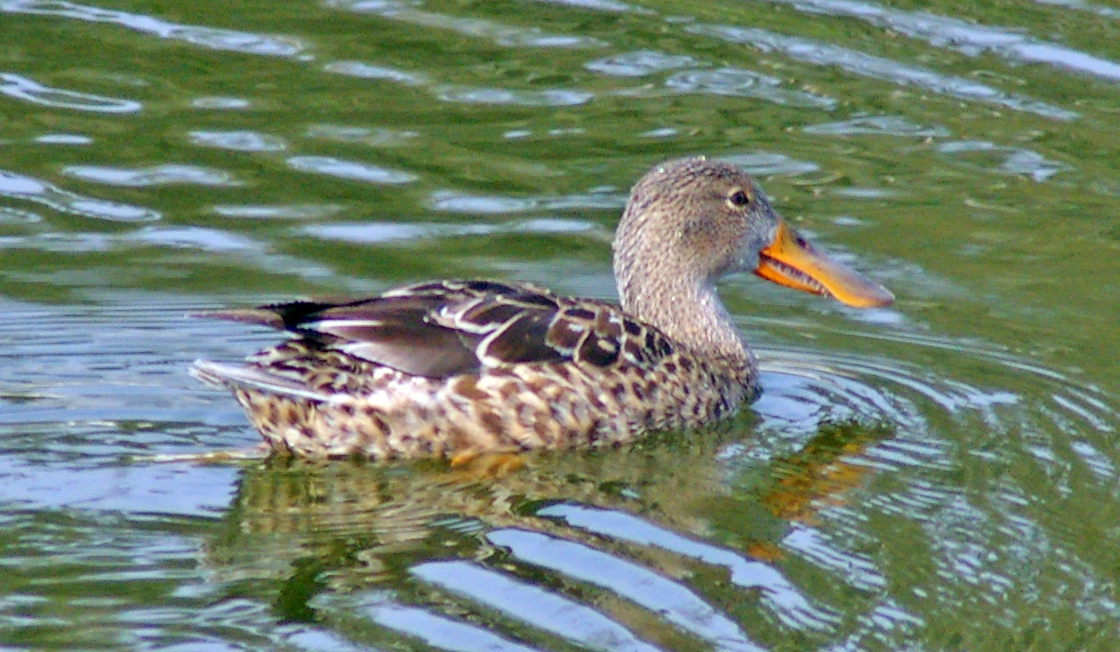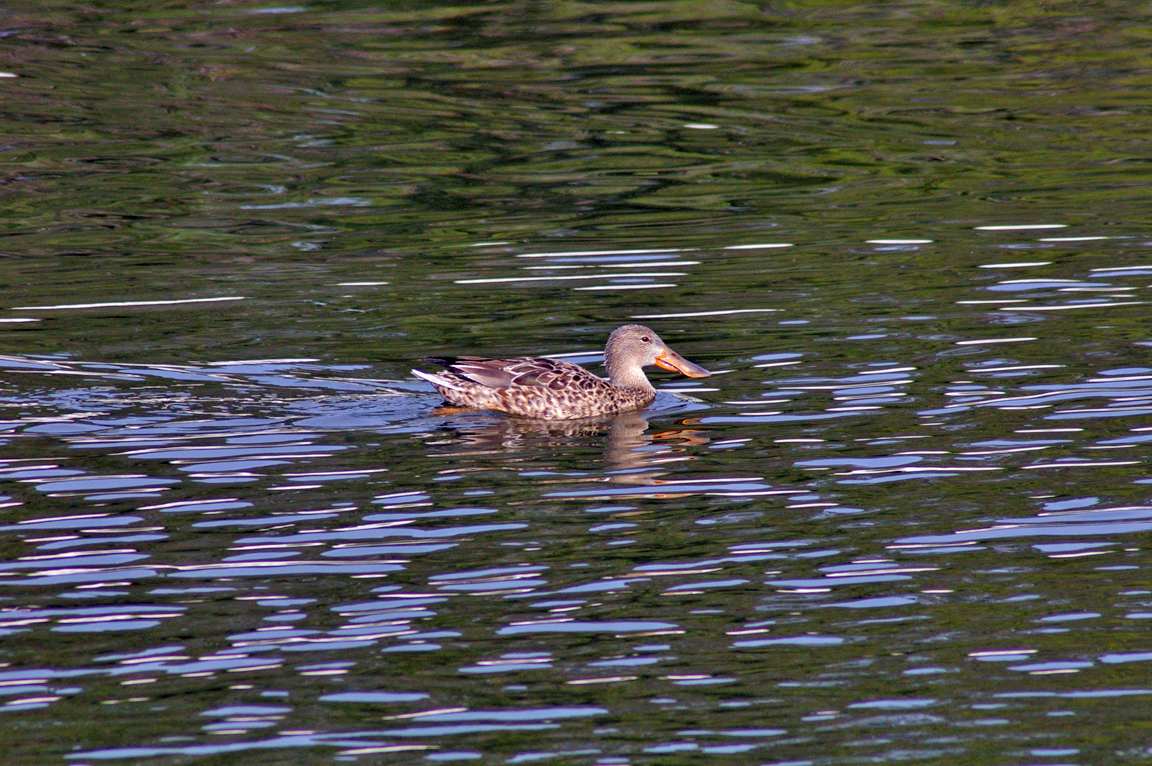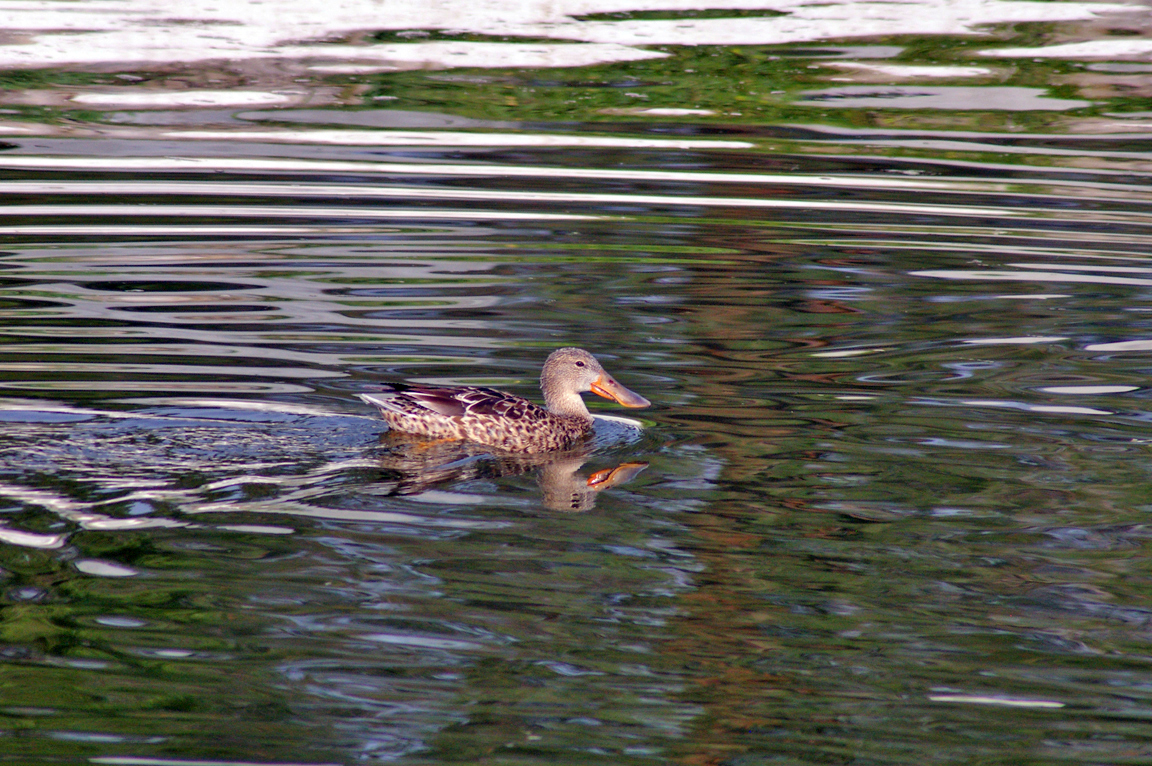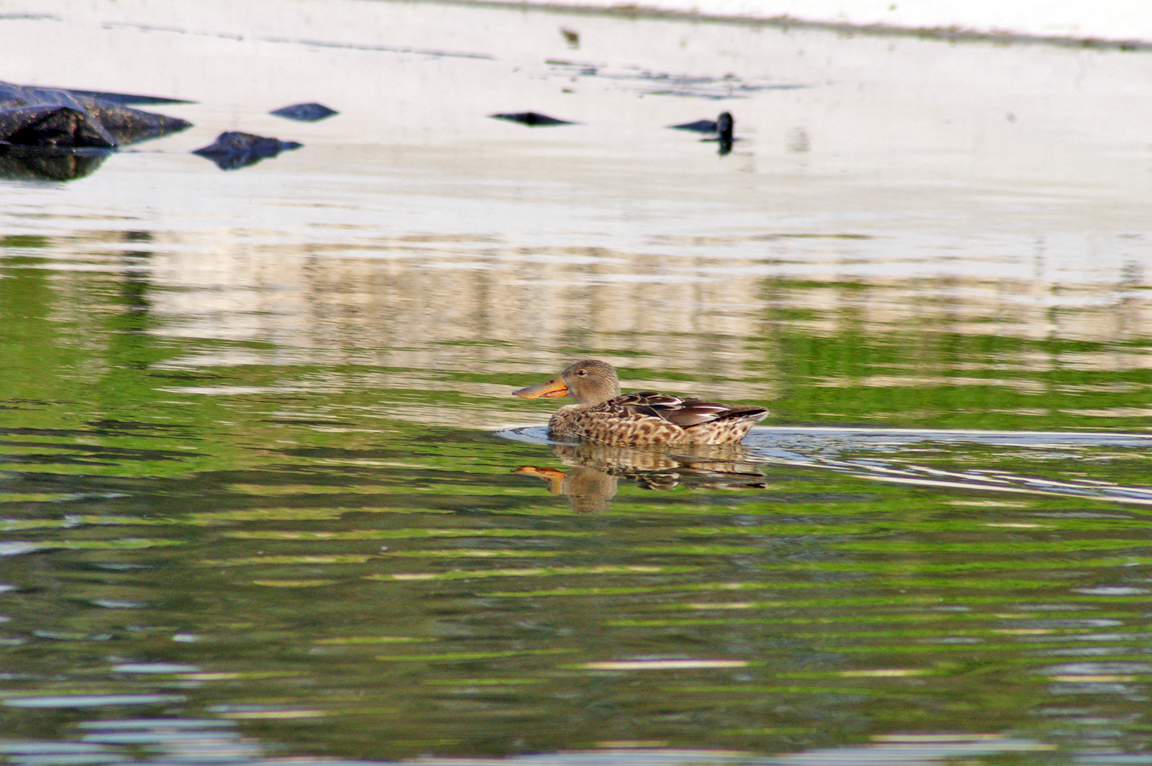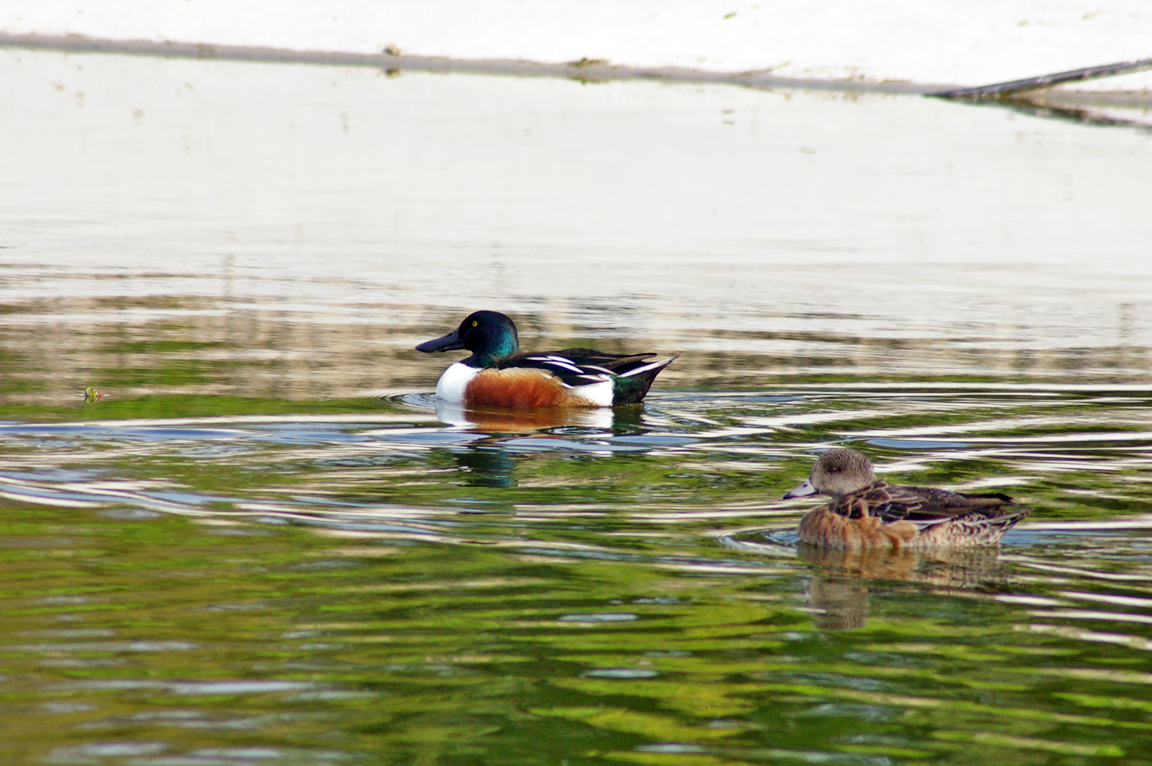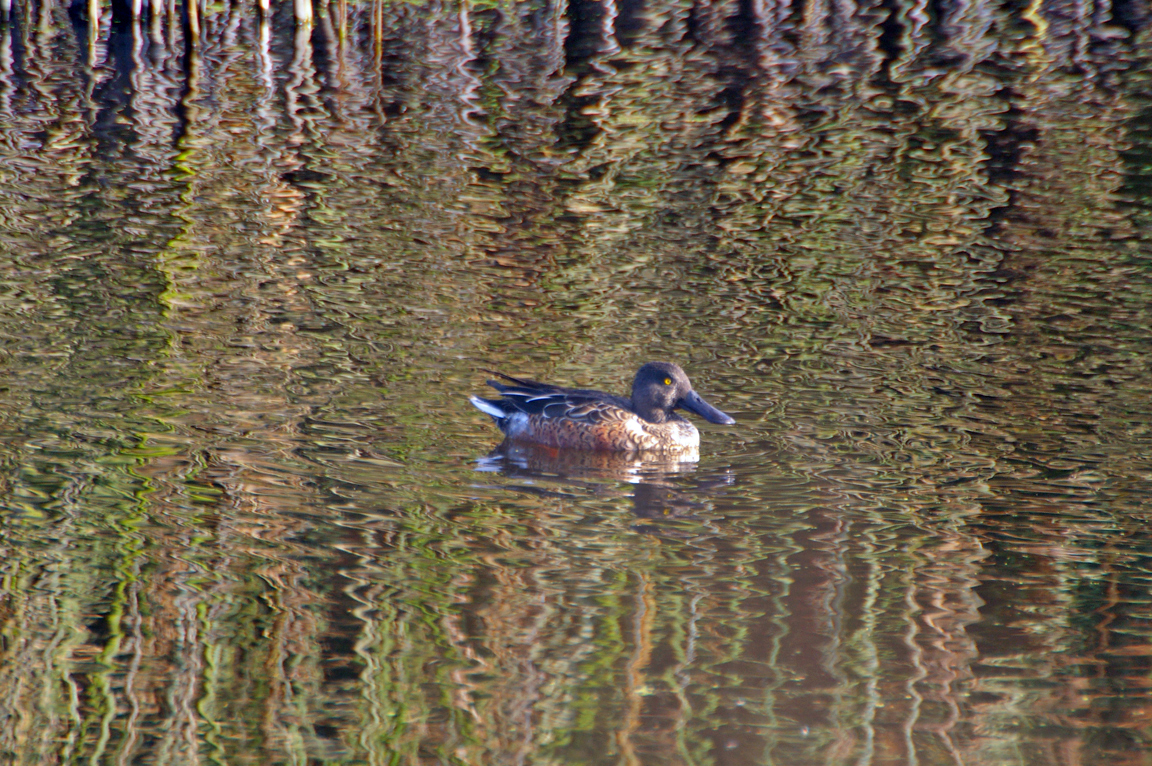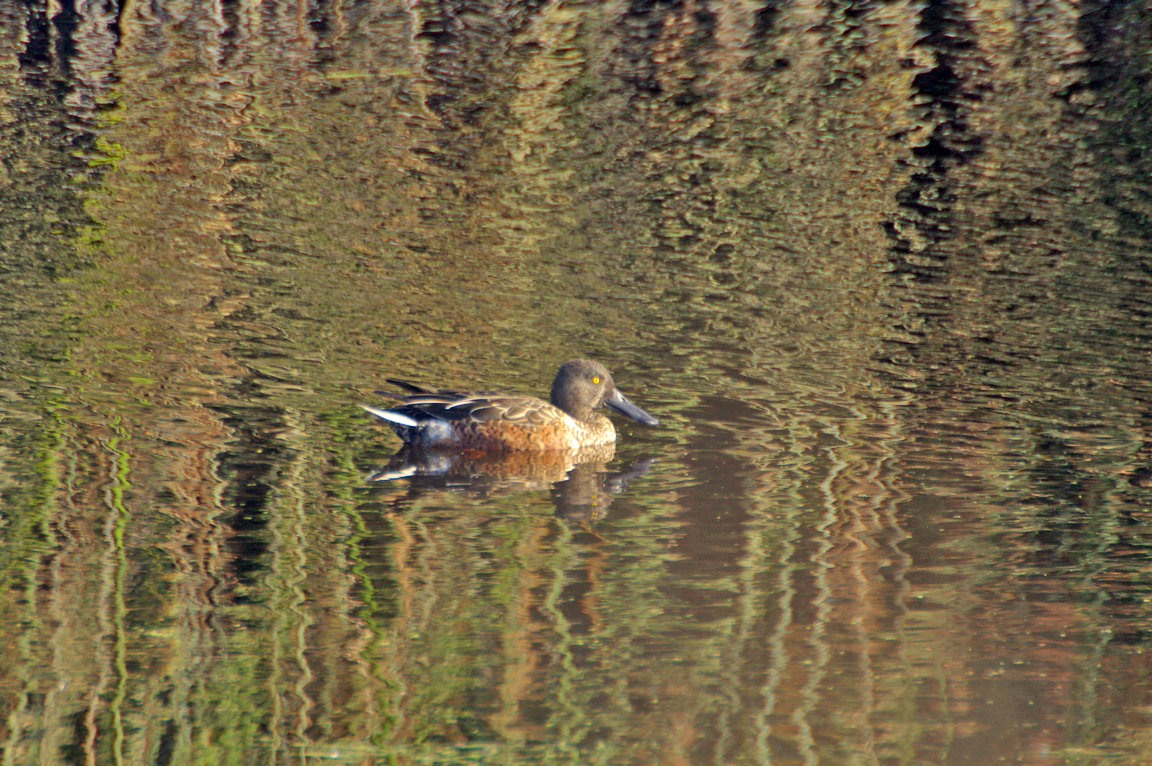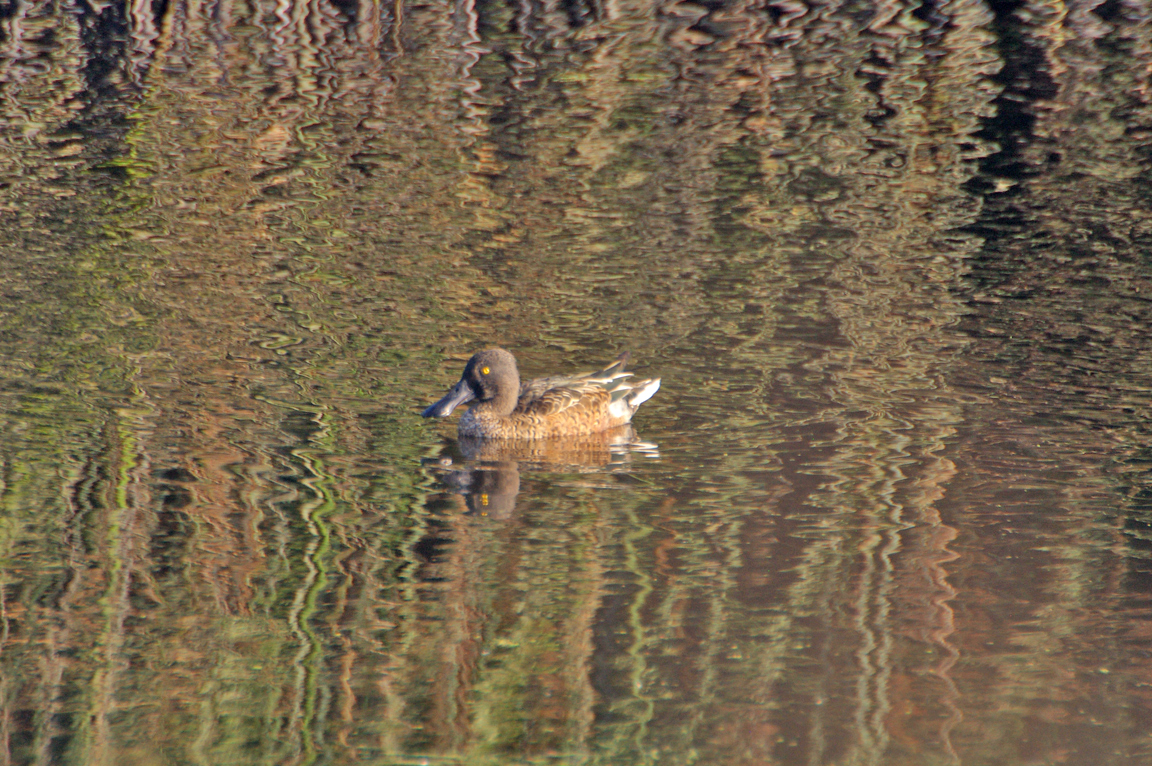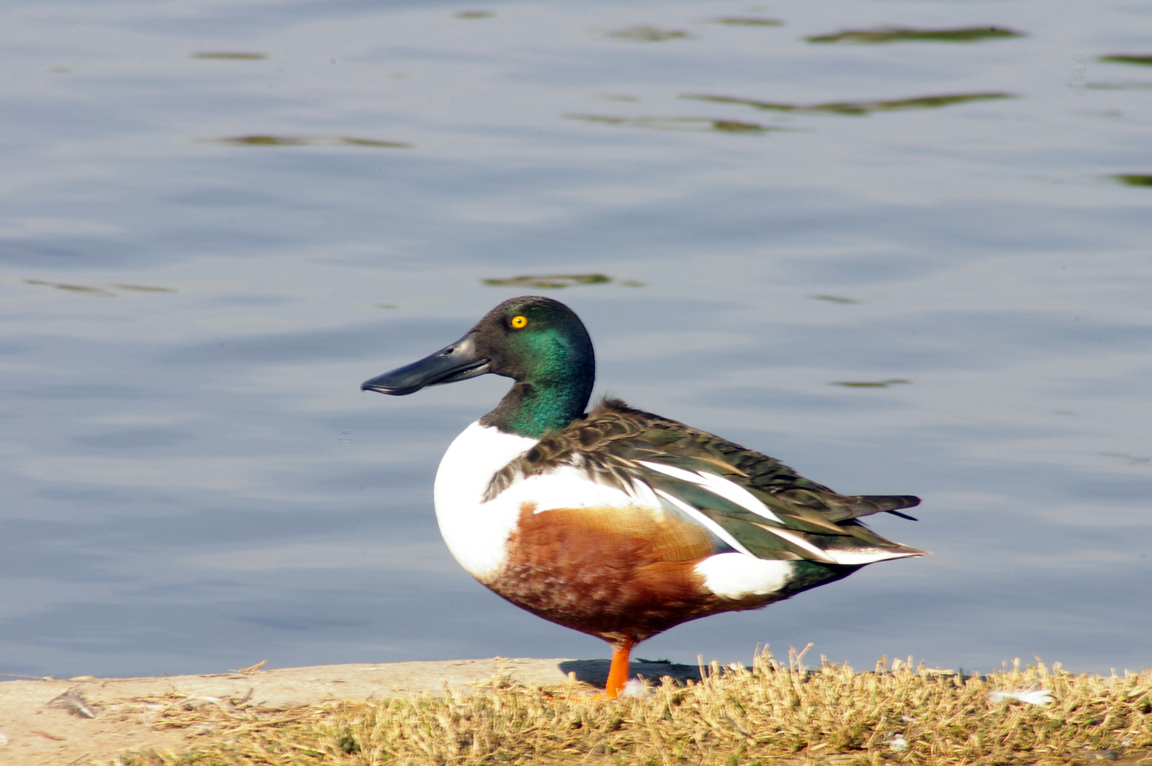|
|
|
 |
Northern Shoveler
|
| Anas clypeata | |
Perhaps the most outwardly distinctive of the dabbling ducks, the Northern Shoveler inhabits wetlands across much of North America. Its elongated, spoon-shaped bill has comblike projections along its edges, which filter out food from the water.
Interesting Information
-
The bill of the Northern Shoveler is about 6.5 cm (2.5 inches) long. The bill has has about 110 fine projections (called lamellae) along the edges, for straining food from water.
-
Northern Shoveler pairs are monogamous, and remain together longer than pairs of other dabbling duck species.
-
When flushed off the nest, a female Northern Shoveler often defecates on its eggs, apparently to deter predators.
Description
Adult Description
-
Size: 44-51 cm (17-20 in)
-
Weight: 400-820 g (14.12-28.95 ounces)
-
Medium-sized duck.
-
Very long bill, wider at tip than at base.
-
Male with iridescent green head, white chest, and rusty sides.
-
Top of wing with a large light blue patch near the front and a line of green feathers along the rear.
-
White under the wings.
-
Legs orange.
Sex Differences
Male
Breeding (Alternate) Plumage
Head dark glossy green. Bill black. Back black. Chest white. Flanks and belly chestnut-brown. Eyes yellow.
Eclipse (Basic) Plumage
Duller. Head and breast brownish black speckled with whitish or tan. Back black with tan feather edges. Flanks light brown. May show indistinct white crescent on face behind bill. Eyes yellow.
Female
Grayish-brown overall; some feathers have light edging with darker centers. Bill olive-green with yellowish base and edges. Eyes brown.
Immature
Similar to adult female.
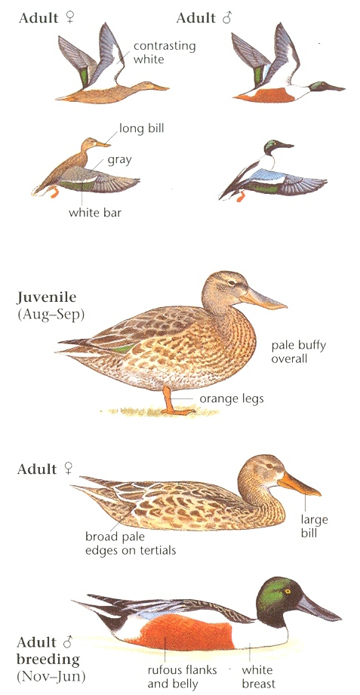
Photo taken from: The Sibley Field Guide by David Allen Sibley
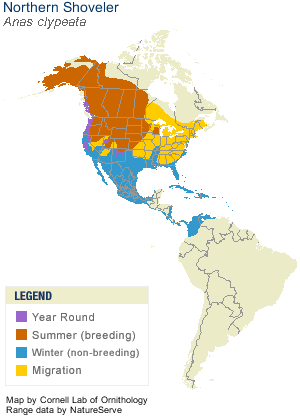
© 2003 Cornell Lab of Ornithology
|
Habitat |
|
Breeds in open, shallow wetlands. In winter, inhabits both freshwater and saline marshes. |
|
Behavior |
|
Forages by swimming along with bill lowered into the water, straining out small crustaceans and other invertebrates. It does not commonly tip its head and upper body forward into the water. |
|
Food |
|
Small swimming invertebrates and some seeds. |
Taxonomy
| Kingdom: | Animalia |
| Phylum: | Chordata |
| Subphylum: | Vertebrata |
| Class: | Aves |
| Order: | Anseriformes |
| Family: | Anatidae |
| Subfamily: | Anserinae |
| Genus: | Anas |
| Species: | Anas clypeata |
Similar Species |
|
|
Bird Sound |
|
Male gives a nasal bray in fall courtship. Female makes various quacks. Also makes a rattling noise, unique among dabbling ducks, upon taking flight. |
|
Eggs look like this |
|
Photo taken from: ARCTOS Collaborative Collection Management Solution |
